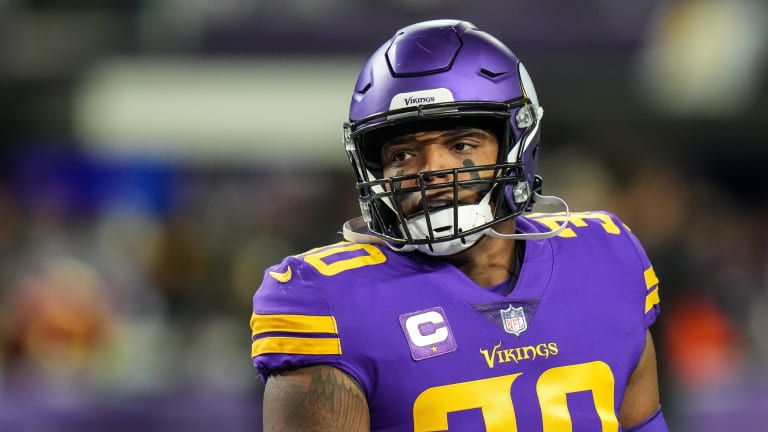
Why the Vikings extended fullback CJ Ham

On Wednesday, the Minnesota Vikings signed fullback CJ Ham to a two-year contract extension, a move that raised some eyebrows considering he was not used as often by Kevin O’Connell last season as in previous Kubiak-influenced offenses.
In 2022, Ham was only on the field for 171 snaps, which was significantly down from 2019-2021 when he saw at least 350 plays each year. To parse out those stats even more, the Vikings used a fullback on 232 of their run plays in 2021 with Klint Kubiak calling the plays and only 91 times with O’Connell pushing buttons.
Ham wasn’t just in the backfield under Kubiak, he also played tight end on 38% of snaps (20% in 2022, per PFF) and caught 17 passes (versus 10 in 2022).
So the natural question is: If they didn’t use him, why keep him around?
Well, past performance does not always predict future results. We already have the indication from the signing of Josh Oliver that the Vikings want to have another tool in their bag with bigger personnel. Ham’s presence forces defenses to make a decision about whether to keep lighter nickel personnel on the field or put an extra linebacker in the game to slow the run.
O’Connell talked extensively at the NFL Combine about the team’s issues with consistent running game and play-action.
“How we use our personnel, different personnel groupings, what are we doing in those personnel groupings?” O’Connell said. “The easy part, once you get that going, is marrying it all and applying pressure to a defense, but this organization saw a shift in how we were defended from previous years to this year. No greater example than getting nearly 65-percent shell coverage over our last six games, which was almost 20 percent higher than any other team in our league, so you’ve got to ask yourself the question why, and then ultimately, how do we use that information to our advantage moving forward while still staying true to who we want to be offensively.”
Translated: Opponents were playing deep safeties and blanketing Justin Jefferson because they had no fear of the Vikings steamrolling them in the running game. That took away some of their ability to get linebackers and safeties to bite on play-action, which resulted in Kirk Cousins ranking only 19th in play-action passer rating. The Vikings also saw a reduction in deep passing, going from 12.7% of passes traveling 20-plus yards to 9.8%.
Ham alone does not suddenly make the Vikings a massively better running, play-action or deep passing team but he’s a cog in that machine that the Vikings may feel wasn’t fully utilized last season. Consider, too, that if the Vikings can’t find another receiver to replace Adam Thielen and are limited to largely Jefferson and KJ Osborn, using bigger personnel packages is a way around needing three receivers on the field all the time.
We also can’t ignore the special teams element. Ham played on Matt Daniels’s kickoff return, kick coverage, punt return and punt coverage units and was the second highest graded special teamer by PFF. Those snaps add up. He played 360 total plays on a unit that played a role in the team ranking 13th in average starting position for and eighth against.
While we don’t yet have terms of the deal, Ham’s price tag isn’t particularly high for someone who can add to different areas. The Vikings aren’t sacrificing their next big free agent signing to keep their fullback.
They also added two other players on Wednesday: Receiver/returner Brandon Powell and linebacker Troy Reeder — both former Rams.
Powell caught 24 passes last season but only averaged 6.5 yards per reception. As a returner, he’s averaged 9.6 yards per punt and 21.0 per kickoff during his four years as a regular in both roles. It would appear that Powell will be competition for Jalen Reagor.
Reeder played a career high 682 snaps in 2021 with the Rams but did not carry a role on defense with the Chargers last season, totaling just 62 snaps despite being healthy the full year.







